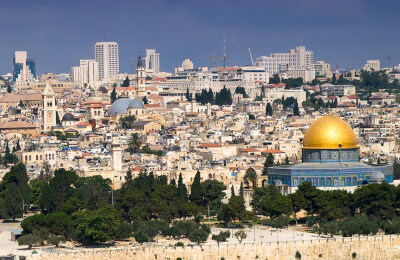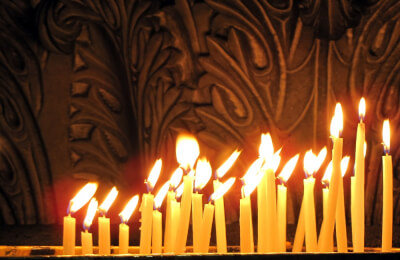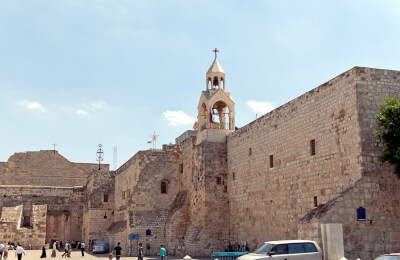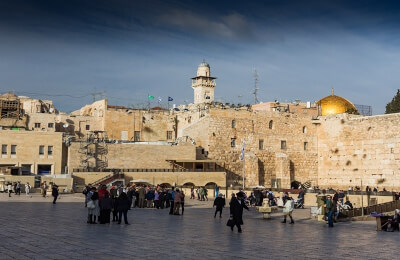
505. Jerusalem Easter Promotion
Jerusalem and Bethlehem Promotion
Jerusalem & Bethlehem Promotion
Jerusalem & Bethlehem (up to 8 people) Promotion
Jerusalem & Bethlehem (up to 18 people) Promotion
Jerusalem & Bethlehem (up to 18 people) Promotion
Jerusalem & Bethlehem (up to 8 people) Promotion
We also found excursions from other cities that are close to your departure city
Other excursions that also deserve your attention
The Enduring Symbolism of Mount Zion
Mount Zion, a hill just outside the walls of the Old City of Jerusalem, is a site of immense historical, religious, and cultural significance. It has been revered throughout the ages and continues to be a focal point of pilgrimage and devotion. The mountain’s very name evokes a spiritual resonance in Judaism, Christianity, and Islam, and it holds a special place in the national consciousness of the Jewish people.
The Historical Roots of Mount Zion
The history of Mount Zion is as complex as it is long. It has been identified in both biblical and post-biblical times with several locations adjacent to the Old City of Jerusalem. In the Hebrew Bible, Zion initially referred to the City of David, the core of ancient Jerusalem where King David built his palace and established his capital. It later came to signify the Temple Mount and, by extension, the entire Land of Israel.
The Shifting Geography of Mount Zion
The identification of Mount Zion has shifted over time. During the Second Temple period, it was considered to be the Temple Mount itself. However, after the destruction of the Second Temple, the name Mount Zion moved to its current location, to the west of the Temple Mount, becoming associated with the upper room where the Last Supper is said to have taken place, and where other significant events in the early Christian community occurred.
The Davidic Connection and Mount Zion's Significance
Mount Zion is traditionally held to be the burial place of King David, though archaeological evidence for this is lacking. The site known as David’s Tomb on Mount Zion is a place of worship and veneration, though the actual tomb of the famed biblical king has never been conclusively located. Regardless of the historical accuracy, this tradition contributes to Mount Zion's spiritual gravitas.
The Dormition Abbey: A Modern Landmark on Ancient Ground
One of Mount Zion's most recognizable landmarks is the Dormition Abbey, with its distinctive bell tower and conical roof. This church is a relatively modern structure, built on the site where the Virgin Mary is said to have ""fallen asleep"" or passed away. The abbey is a site of pilgrimage for many Christians who come to honor Mary’s life and her role in the story of Jesus.
The Room of the Last Supper: A Pilgrimage Destination
Above David’s Tomb is the Cenacle, traditionally recognized as the Room of the Last Supper. This second-story room, though refurbished through various historical periods, is considered one of Christianity’s holiest sites. Every year, thousands of pilgrims visit the Cenacle to commemorate Jesus' final meal with his disciples and the descent of the Holy Spirit on Pentecost.
Mount Zion in Jewish Liturgy and Ritual
Mount Zion holds a deep spiritual significance in Jewish tradition. The term “Zion” is synonymous with Jerusalem and the Land of Israel at large and is mentioned over 150 times in the Hebrew Bible. It embodies the Jewish people's yearning for their historical homeland and is central to Jewish liturgy and rituals, including prayers for the restoration of Jerusalem.
The Islamic Heritage of Mount Zion
Mount Zion is also important in Islam. It is home to the Mosque of Nabi Dawud, which celebrates the prophethood of David, considered a prophet in Islam. The site reflects the layered and intertwined religious narratives that characterize Jerusalem, a city sacred to Jews, Christians, and Muslims alike.
Mount Zion in Contemporary Culture and National Identity
Beyond its ancient roots, Mount Zion continues to play a role in modern Israeli culture and national identity. It is celebrated in Israeli songs and poetry and symbolizes the historical continuity and resilience of the Jewish people. The site represents not just past glories and spiritual aspirations but also the living, breathing culture of present-day Israel.
Archaeological Excavations on Mount Zion
Mount Zion has been the focus of archaeological interest for many years, revealing insights into Jerusalem's history from the First Temple period onward. Excavations have unearthed evidence of Byzantine, Roman, and Islamic periods, reflecting the city’s diverse past and the many peoples and cultures that have left their mark on this storied hill.
Mount Zion's Natural Landscape and Biodiversity
Amidst its rich history, Mount Zion also boasts a remarkable natural landscape. The hillside is adorned with cypress, olive, and pine trees, and the surrounding valleys feature gardens with an array of plant species that thrive in the Mediterranean climate. The biodiversity within the urban setting of Jerusalem adds another dimension to Mount Zion's allure.
The Cultural Fusion on Mount Zion
Mount Zion is a mosaic of cultures, a place where Armenian, Jewish, Muslim, and Christian quarters come together. This fusion is palpable in the languages spoken, the festivals celebrated, and the daily life that weaves through the cobbled lanes and ancient buildings.
The Festivals and Commemorations on Mount Zion
Throughout the year, Mount Zion hosts a variety of festivals and commemorations that reflect the hill’s multifaceted religious significance. From Christian observances like Holy Week and Pentecost to Jewish days of remembrance and celebration, the calendar is punctuated with events that draw visitors from around the world.
Visiting Mount Zion: A Traveler's Experience
For travelers, a visit to Mount Zion is a journey through layers of time. The sights and sounds of the hill – from the chants of worshippers to the quiet contemplation of pilgrims – offer an immersive experience. Exploring Mount Zion’s sites is not just a walk through history but an encounter with a place that continues to shape the spiritual landscape of countless individuals.
Conclusion: The Lasting Resonance of Mount Zion
Mount Zion stands as a testament to the complexity and depth of Jerusalem’s history. It is a touchstone for the sacred narratives of multiple religions and a symbol of long-standing traditions. As both an ancient site and a living part of modern Jerusalem, Mount Zion remains a place where past and present, earth and heaven, human and divine, seem to meet. Its legacy, as rich as the history it has witnessed, continues to inspire and to be reinterpreted by each generation that walks its storied paths.
























